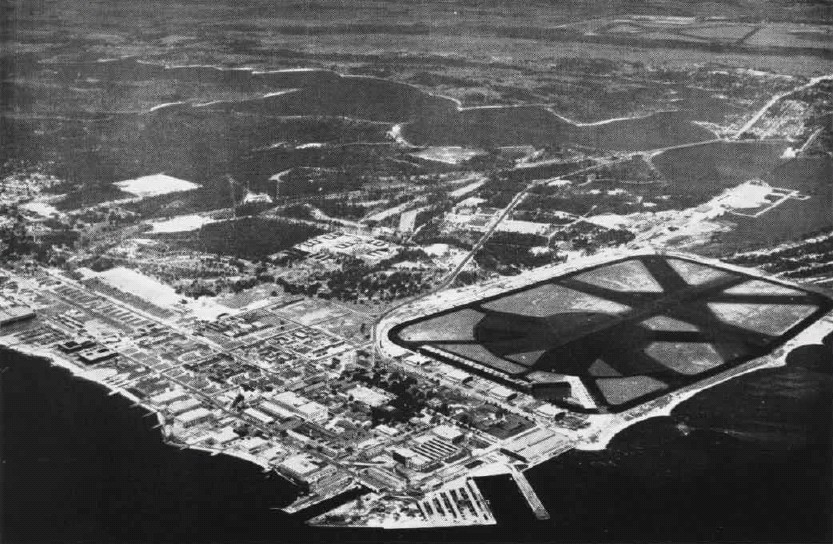Chevalier Field on:
[Wikipedia]
[Google]
[Amazon]
 Chevalier Field was the original non-seaplane aircraft landing area at
Chevalier Field was the original non-seaplane aircraft landing area at
 Chevalier Field was the original non-seaplane aircraft landing area at
Chevalier Field was the original non-seaplane aircraft landing area at Naval Air Station Pensacola
Naval Air Station Pensacola or NAS Pensacola (formerly NAS/KNAS until changed circa 1970 to allow Nassau International Airport, now Lynden Pindling International Airport, to have IATA code NAS), "The Cradle of Naval Aviation", is a United State ...
, Florida. Established originally in 1922 as Station Field, it was an expansion of the balloon operating field that opened in 1916. It was located on the northeast side of the Navy shipyard, on the western edge of Pensacola Bay
Pensacola Bay is a bay located in the northwestern part of Florida, United States, known as the Florida Panhandle.
The bay, an inlet of the Gulf of Mexico, is located in Escambia County and Santa Rosa County, adjacent to the city of Pensacola ...
and south of Bayou Grande. The small town of Woolsey, just north of the Navy Yard, had been razed for the creation of the airdrome. "Locals assumed the Army's involvement in the project and had to be informed that the field, initially called Station Field, was intended for the exclusive use of Navy landplanes."
Expanded in 1935, it was renamed Chevalier Field after United States Naval Aviation pioneer Godfrey de Courcelles Chevalier. A graduate of the U.S. Naval Academy in June 1910, who was appointed Naval Air Pilot No. 7 on 7 November 1915 and a Naval Aviator No. 7 on 7 November 1918. Chevalier commanded the first naval air station in France, at Dunkerque, in November 1917, and for his World War I service was awarded the Navy Distinguished Service Medal. On 26 October 1922 Lieutenant Commander Chevalier made the first landing on the USS ''Langley'''s deck, the U.S. Navy's first aircraft carrier, in an Aeromarine 39-B, ''A-606''. Chevalier died at Norfolk Naval Air Station after a crash.
A blimp hangar and two aircraft hangars had been constructed on the south side of the field by 1935, and the field was further expanded in 1938, adding schools for aviation medicine and aviation maintenance. By World War II, the field had seven asphalt runways arranged in two clusters that intersected in mid-field, the longest 3,100 feet. Seaplane hangars had been added on the southeast corner facing Pensacola Bay by this time.
With the introduction of jet aircraft, Chevalier's limited runway length and ramp space became a problem, and on 2 November 1951, Forrest Sherman Field
Naval Air Station Pensacola or NAS Pensacola (formerly NAS/KNAS until changed circa 1970 to allow Nassau International Airport, now Lynden Pindling International Airport, to have IATA code NAS), "The Cradle of Naval Aviation", is a United State ...
was dedicated, three miles to the west, which remains the primary air facility at NAS Pensacola, as well as the home of the Blue Angels
The Blue Angels is a flight demonstration squadron of the United States Navy.
demonstration team. Chevalier Field remained in limited use as a helicopter facility and its perimeter was used as a storage area for aircraft awaiting refurbishment by the Naval Air Rework Facility (NARF), later renamed the Naval Aviation Depot (NADEP) located at the base into the 1980s and early 1990s. A rail spur onto the base was aligned along the western edge of the airfield until it was removed circa 1979. This line was originally the Pensacola and Fort Barrancas Railroad, dating from 1870, an eight-mile line connecting Pensacola with Fort Barrancas
Fort Barrancas (1839) or Fort San Carlos de Barrancas (from 1787) is a United States military fort and National Historic Landmark in the former Warrington area of Pensacola, Florida, located physically within Naval Air Station Pensacola, which wa ...
through Warrington
Warrington () is a town and unparished area in the borough of the same name in the ceremonial county of Cheshire, England, on the banks of the River Mersey. It is east of Liverpool, and west of Manchester. The population in 2019 was estimat ...
and Woolsey.
Helicopter operations ended in the period 1994-1996, coinciding with the Base Realignment and Closure
Base Realignment and Closure (BRAC) is a process by a United States federal government commission to increase United States Department of Defense efficiency by coordinating the realignment and closure of military installations following the end ...
(BRAC)-directed closure of NADEP Pensacola, although the airfield itself was closed as an independent air facility by 1976. In the late 1990s, with the BRAC-directed relocation of the Naval Air Technical Training Center (NATTC) from NAS Memphis, the airfield was completely removed and the more modern buildings of the former NADEP repurposed as a new complex of buildings and barracks for the relocating NATTC was erected on the site. Several hangar buildings, including the original control tower, still exist and have been adapted for reuse as part of the NATTC facility.
References
{{coord, 30, 21, 13, N, 87, 16, 05, W, type:airport_region:US-FL, display=title Airports in Florida Buildings and structures in Pensacola, Florida Military installations in Florida Airfields of the United States Navy Transportation buildings and structures in Escambia County, Florida Military installations established in 1922 Closed installations of the United States Navy